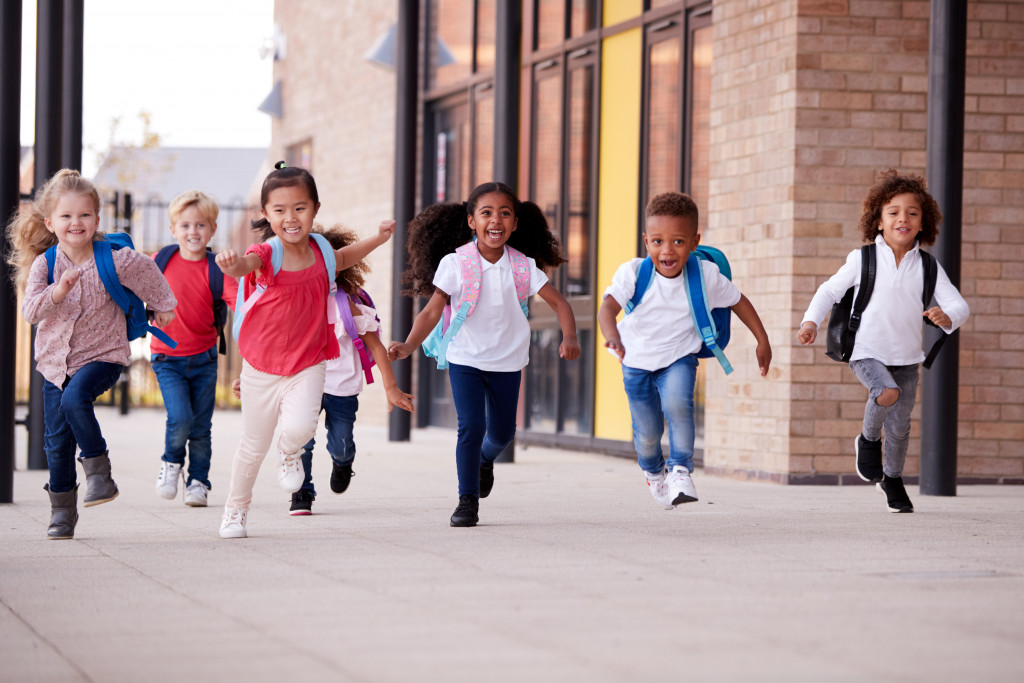Thousands of individuals perish every year as a result of disasters that strike all facets of life. Therefore, we must make emergency preparedness a priority, focusing on developing emergency procedures to raise public awareness and put them into practice.
Remember that making plans before a catastrophe happens and waiting for calamity to strike before making preparations are two very different concepts. After all, we should know better; the current global health crisis has taught us that the hard way.
As schools in the United States gradually reopen, many parents prioritize safety and readiness for their children. This encompasses all areas of catastrophe and crisis preparedness. Similarly, school directors must consider revisiting their plans and update their preparations for various crises present. And although it’s a worldwide emergency concern, we should not limit our focus on eradicating COVID-19 alone. Other areas that have long been posing threats to our children should be addressed as well, whether it’s a frequent evacuation drill or maintaining code-compliant building infrastructure.
Gun violence within the campus.
Since the new millennium, at least 180 school shooting incidents have occurred in the United States. The terrifying part about them is that they can strike at any time and can be done by anyone. Educational institutions thus need to enhance preventative efforts and improve their preparation for violence and active shooter threats for students and faculty.
For example, schools may expand their support services, prioritizing employees and children who exhibit violent tendencies, have rough or violent domestic situations, are bullied, or have trouble building healthy peer connections. In addition, assisting kids in developing and maintaining a positive outlook in life and a healthy mental state can help identify and resolve warning signals before a problem occurs.
Developing a better security system among those who go and in and out of school campuses can also help guarantee that institutions will remain secure for children. Moreover, having active shooter training programs for schools can help reduce the number of deaths and injuries. In addition, when an attack occurs, authorities and school officials need to have a system in place that would allow them to collaborate and keep each line updated to protect the safety of everyone within the facility.

Earthquakes
While most natural catastrophes are predictable and trackable, earthquakes typically occur without notice. So although minor earthquakes may have few effects on a school, this doesn’t mean institutions shouldn’t have preventive precautions anymore, especially when a big one strikes.
Considerate plans and preparedness can assist in improving the protection of children and staff in the event of a natural disaster during class hours. Old classrooms and buildings will almost always be outdated with earthquake requirements because they were built before becoming code compliant. Seek the services of an expert to examine the structure and identify places that need to be strengthened.
In the event of a significant tremor, it may take some time before teachers, employees, and pupils can securely exit the premises. Therefore, prepare a plan to stay in one location for a few days, with enough batteries, food, flashlights, radio, water, whistle, and first aid supplies on standby.
Fire incidents at school
According to reports, about 3,230 school fires were reported in the United States in the past years. On average, these incidents resulted in $37 million of property damage in total annually. But, of course, emergency preparedness must not be confined to the prevention of interior fires alone. Wildfires and forest fires may pose severe dangers to schools, particularly in the West and regional towns, where extreme heat and strong winds enable flames to spread quickly.
Institutions must consider installing a robust fire monitoring and alarm system that sets sirens, enabling fire sprinklers, and contacting emergency responders for immediate help. Additionally, students should also be given awareness on how to activate and handle these emergency features responsibly. Although one wouldn’t detect fire immediately, everyone should know the safety fire exits to safely and quickly escape the premises.
On the other hand, bushfires take a while to spread, giving parents and teachers plenty of time to evacuate their children to safety. They are nonetheless prone to abrupt shifts, thus despite a blaze that appears quite far, they must be carefully treated and dealt with quickly.
Emergencies can occur at any moment. Therefore, everyone must be trained to respond safely and efficiently. The question of whether these events might happen isn’t the issue anymore. The pandemic has proven time and again that such disasters can turn the world upside down and that similar events can happen at any time. Therefore, everyone has a role to play in promoting and maintaining school-wide preparedness for safety to mitigate the consequences of crises and other risky circumstances.


